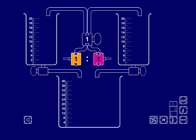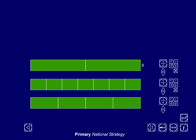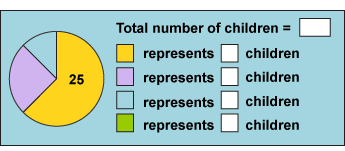Consolidation and practice
These resources are to support children in guided or independent work. Roll over the highlighted resources for a description.
Ratio and proportion

This interactive teaching program (ITP) is an ICT-based tool to support the exploration of number. Ratio and proportion ITP allows the child or teacher to represent and combine two different liquids in a chosen ratio.
Fractions

The Fractions interactive teaching program (ITP) is an ICT-based tool to support the exploration of part numbers. Fractions ITP allows the child or teacher to represent and compare fractions on fraction strips. The displayed strips can be labelled as a vulgar fraction, a decimal (to three decimal places) or a percentage, and the ratio of yellow to green parts of each strip can also be displayed.
Opportunities to use and apply
Possible contexts include:
- Geography, e.g. using scale to interpret/draw maps and plans.
- Design technology/art, e.g. creating scale models or drawings.
- Food technology, e.g. adapting recipes; proportions of ingredients.
- Measures, e.g. conversion between units.
- Data handling, e.g. proportions within pie charts; conversion graphs.
- Important mathematical ratios, e.g. The Golden Ratio; Pi.
Confirming learning
Ask probing questions such as:
- Fruit squash is to be mixed with water in the ratio 1:5. How much squash and how much water should be put in to fill a 3 litre jug? How did you work this out?
- Tina has 440 sweets of which 40 are red. Ryan has 540 sweets of which 45 are red. Who has the greater proportion of red sweets? Explain how you solved this problem.
- In this pie chart, the yellow segment represents 25 children. How many children does the whole pie chart represent?

 Counting and understanding number and associated objectives
Counting and understanding number and associated objectives


